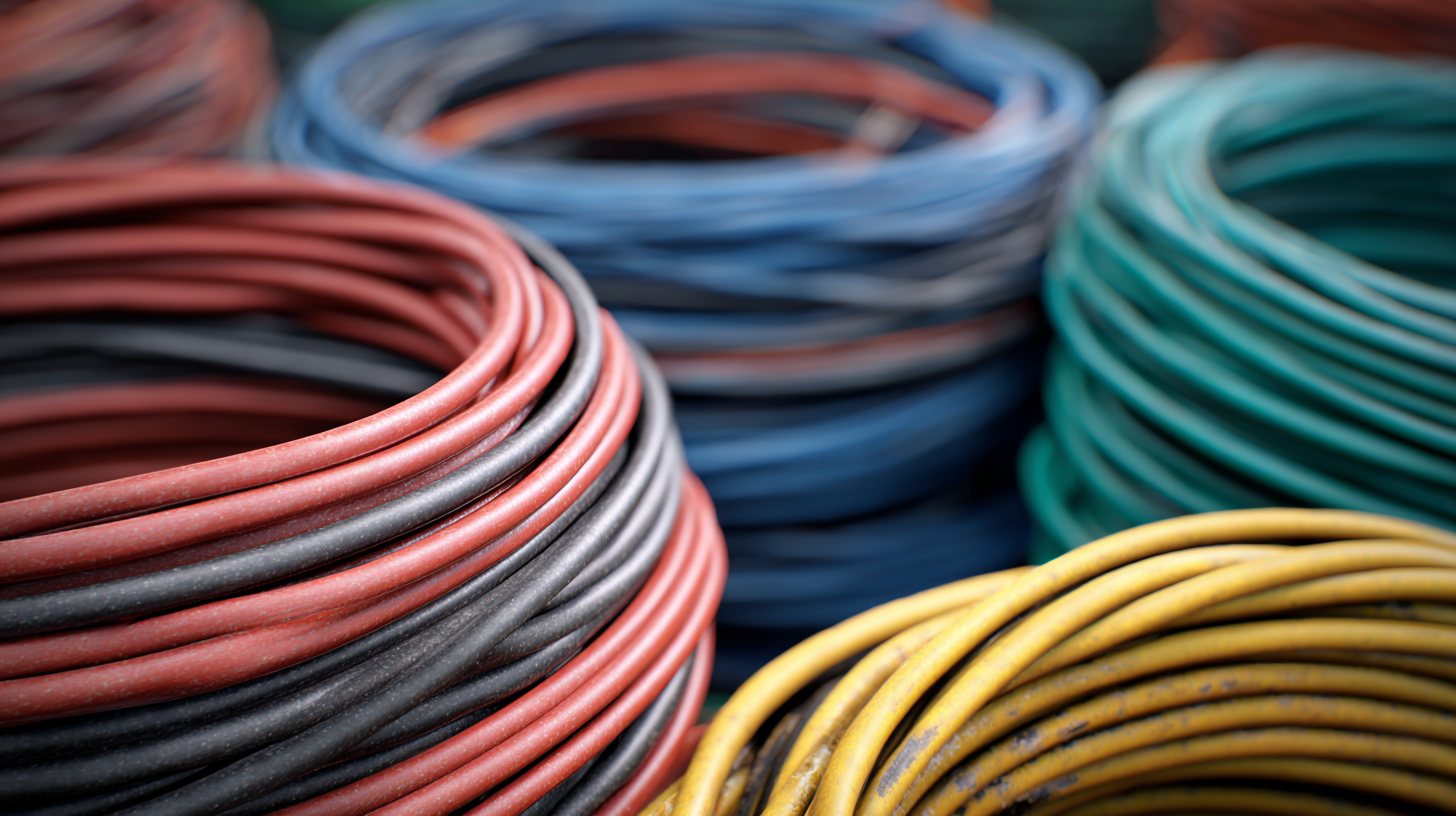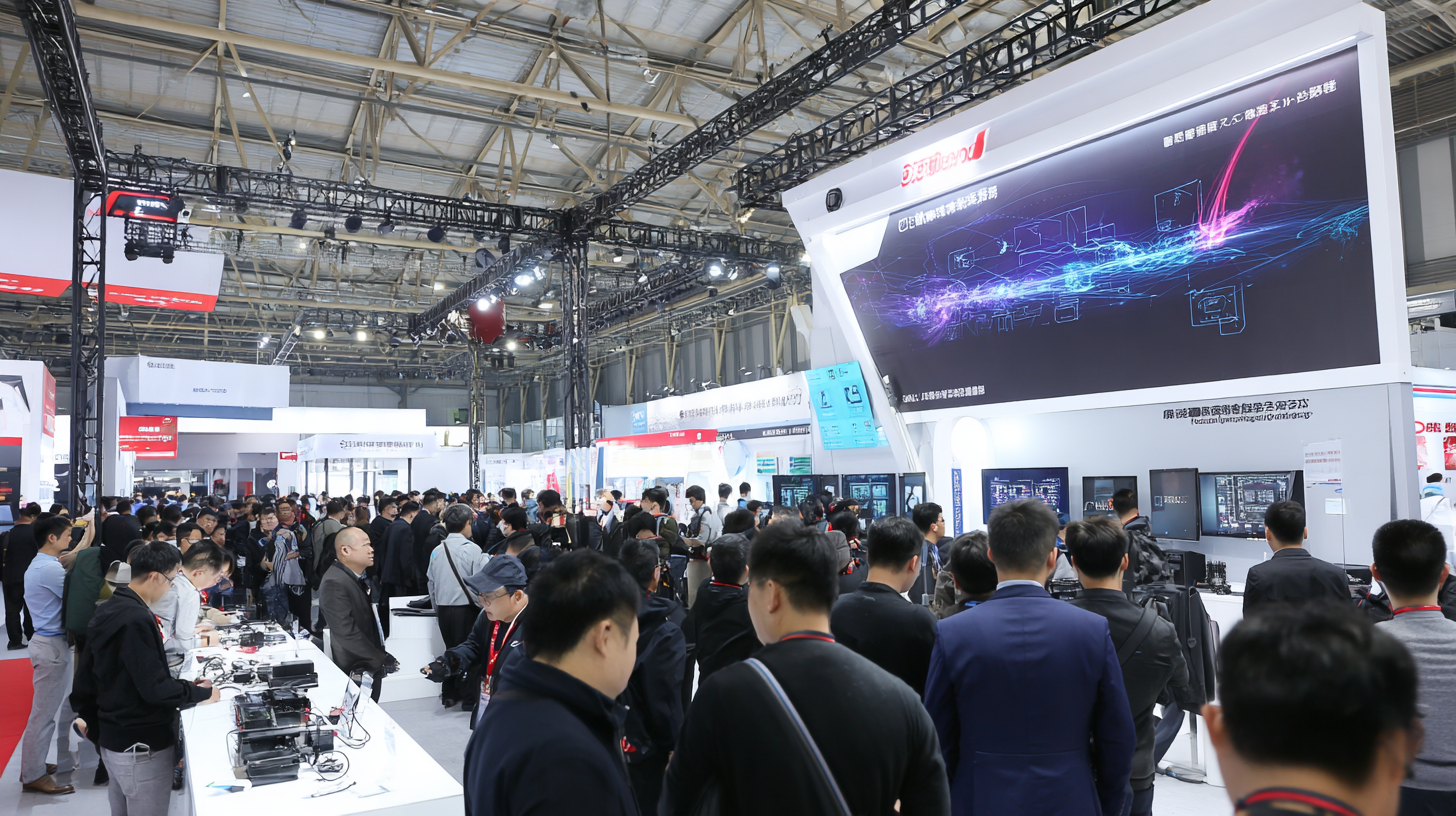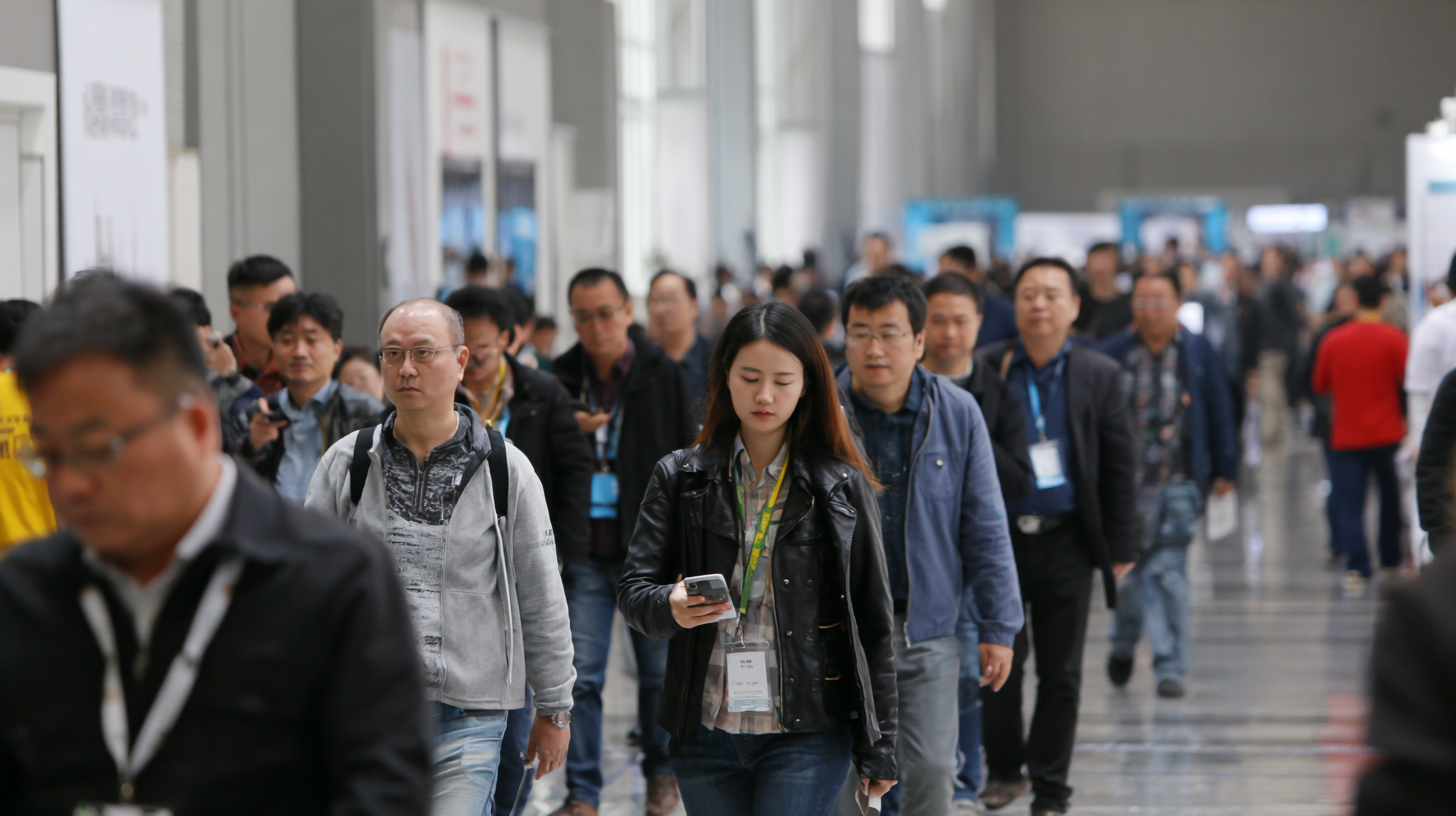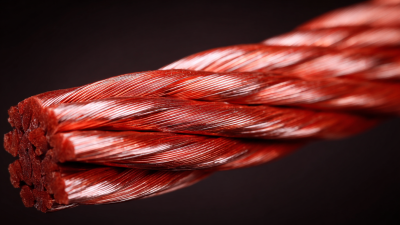
-
Home
-
Products
-
PVC Cable Material
-
Low Smoke Zero Halogen Cable Material
-
Cable material
-
Optical fiber cable
-
-
About Us
-
VR
-
News
-
Blog
-
Contact Us
Leave Your Message

The 138th China Import and Export Fair, held in 2025, serves as a pivotal platform for showcasing innovations in cable material technology that are transforming industries globally. As the cable industry continues to evolve, the demand for advanced cable materials is projected to grow at a CAGR of 6.5% from 2023 to 2028, driven by the increasing need for high-performance electrical installations and renewable energy systems.

Reports indicate that emerging materials such as fiber-reinforced composites and eco-friendly polymers are gaining traction, promising enhanced durability and sustainability. The fair acts as a critical junction where manufacturers, suppliers, and innovators come together to share insights and explore new opportunities in cable material development, catering to the burgeoning demand across sectors including telecommunications, automotive, and renewable energy.
This exploration not only highlights technological advancements but also addresses the environmental challenges posed by traditional materials, underscoring the significance of innovation in shaping a more sustainable future for the cable industry.
The 138th China Import and Export Fair in 2025 was a significant platform for showcasing innovative cable materials that are set to revolutionize the industry. Exhibitors presented a range of advanced materials designed to enhance performance, sustainability, and safety. Among the innovations were high-conductivity copper alloys and biodegradable insulation materials, which reflect the growing demand for environmentally friendly solutions in electrical applications.
One of the standout products featured at the fair was a new type of composite cable that combines lightweight properties with exceptional durability. This innovation aims to address the challenges of traditional cables, which can often be cumbersome and prone to damage. Furthermore, several companies highlighted the use of advanced nanotechnology in cable manufacturing, resulting in stronger and more efficient materials that can withstand extreme conditions. Such innovations not only elevate the performance standards of cables but also contribute to reducing the overall carbon footprint of the industry.
The cable industry is witnessing a transformative period characterized by a growing focus on sustainability and technological advancements. As highlighted at the 138th China Import and Export Fair, industry leaders are increasingly adopting eco-friendly materials and practices, aligning with global trends towards greener production. This shift not only addresses environmental concerns but also meets the rising consumer demand for sustainable products.
Innovations in cable materials are not only improving energy efficiency but also reducing the overall carbon footprint of manufacturing processes.
Additionally, technological advancements such as 3D printing are revolutionizing how cables are produced. Insights drawn from executive surveys of leading additive manufacturing companies reveal that 3D printing is poised to enhance customization and reduce waste in production. The ability to create complex designs with greater precision opens up new opportunities for innovation in cable technology, facilitating the development of lighter, more durable, and efficient products. As the industry adapts to these trends, collaboration among engineers, manufacturers, and technology specialists will be crucial in shaping the future landscape of cable materials and ensuring that these innovations align with sustainability goals.
The 138th China Import and Export Fair 2025 showcased a variety of innovations in cable materials, emphasizing sustainability in production processes. At the forefront of this exhibition were companies presenting eco-friendly alternatives to traditional cable materials, which often rely on non-renewable resources. These innovations include biodegradable materials, recycled plastics, and low-impact manufacturing techniques aimed at reducing carbon footprints. By shifting toward more sustainable options, the industry is not only addressing environmental concerns but also responding to a growing consumer demand for greener products.
Additionally, several exhibitors highlighted the development of energy-efficient cables that minimize energy loss during transmission. These innovations promise not only to enhance performance but also to support global efforts in reducing energy consumption. Workshops and presentations throughout the fair focused on the importance of integrating sustainability into the cable industry, showcasing how green technology can drive economic growth while benefiting the planet. The collective effort of industry leaders at the fair illustrates a significant step towards a more sustainable future for cable production and highlights the role of innovation in achieving environmentally responsible goals.
 The 138th China Import and Export Fair in 2025 showcased groundbreaking developments in cable materials, emphasizing the need for enhanced performance in connectivity solutions. A comparative analysis of new cable materials revealed that alternatives such as carbon nanotube-infused polymers and graphene-based composites are gaining traction. According to a recent report by Market Research Future, the global market for advanced cable materials is projected to grow at a compound annual growth rate (CAGR) of 8.5% from 2023 to 2030, driven largely by the demand for faster and more efficient electrical transmission.
The 138th China Import and Export Fair in 2025 showcased groundbreaking developments in cable materials, emphasizing the need for enhanced performance in connectivity solutions. A comparative analysis of new cable materials revealed that alternatives such as carbon nanotube-infused polymers and graphene-based composites are gaining traction. According to a recent report by Market Research Future, the global market for advanced cable materials is projected to grow at a compound annual growth rate (CAGR) of 8.5% from 2023 to 2030, driven largely by the demand for faster and more efficient electrical transmission.
Innovations in cable materials are not just about efficiency; they also focus on durability and environmental sustainability. For instance, studies conducted by the International Electrotechnical Commission indicate that cables made from biodegradable materials can reduce environmental impact by up to 40% compared to traditional PVC options. In addition, the tensile strength of graphene-reinforced cables is reported to be up to five times greater than that of conventional copper cables, enabling longer cable runs without signal degradation. This evolution in material science promises to revolutionize the industry, catering to the growing needs of telecommunications, energy, and automotive sectors.
At the 138th China Import and Export Fair in 2025, industry leaders gathered to shed light on the future of the cable industry, emphasizing the innovations and challenges that lie ahead. The landscape of cable technology is evolving rapidly, driven by advancements in materials and integrated systems that enhance performance and sustainability. Discussions highlighted the critical role of innovation in addressing contemporary issues, including environmental concerns and the demand for higher efficiency in manufacturing processes.
Participants at the fair also pointed out the challenges that accompany these innovations. Issues such as supply chain disruptions, regulatory hurdles, and the need for greater collaboration among industry stakeholders were prevalent in the discussions. The fair served as a platform for networking and knowledge exchange, allowing companies to explore new ideas and collectively strategize on navigating the complexities of this dynamic industry. As the sectors surrounding energy and telecommunications continue to grow, the emphasis on cutting-edge cable solutions becomes increasingly vital for ensuring future connectivity and efficiency.






